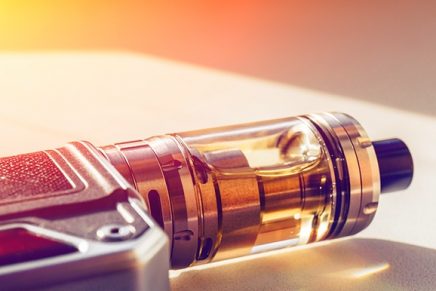Just like a motorist and their vehicle, as a vaper, it is important to know about your vape device.
And not just so you can improve your vaping experience. Understanding the components of your device will not only enable you to maximise your experience, but also ensure you are using it properly and taking good care of it.
Now, one of the most vital components of your vaporiser is the atomiser. Without this part, your vaping device is as useful as an empty box with just liquid and battery inside. This is because it is in the atomiser that the main business goes down.
What is an Atomiser?
By and large, an atomiser is a general term used to refer to any device that converts liquid into mist. In the vaping world, this is the part of your device that is tasked with the responsibility of heating up your vape juice and converting it into an inhalable vapour.
Often the case, the word atomiser is used to refer to different things. Sometimes, you will find it being used to specifically imply the vape coil.
In actual sense, though, the atomiser is the unit that houses the coil (heater) and also the wick, an absorbent material whose purpose is to absorb e-juice.
How an Atomiser Works
As much as the atomiser plays a very critical role in your e-cig device, its mode of function is actually very basic.
When you switch on your device – either manually by pressing a button or auto-activating by taking a few drags of your e-cigarette – this fires up the battery, the part which provides power to your vape device.
This sets the atomiser into action whereby the coil inside the atty starts heating up. Surrounding the coil is the wick, which can be made of different materials such as cotton or silica.
The wick is soaked in the e-juice, and when it comes into contact with the heat emanating from the coil, it starts to heat up the liquid inside the vape tank. Once the e liquid hits the right temperature, it is converted into vapour and voila, job done.
In order for the atomiser to function well, the coil (through the wick) has to be either submerged in e-juice or in a heavily saturated environment. Otherwise, it will overheat.
The vape juice acts as a coolant, ensuring the atomiser is functioning at ideal temperatures – around 60°C to 70°C. If the atomiser does not have sufficient moisture to keep it cool, it will overheat, reaching as high as 300°C, and eventually fail.
Since there is no e-juice to vaporise, the high temperatures will burn the wick and the filling material of the cartridge or cartomiser, causing the internal parts of the atomiser to melt.
This is why it is advised to always keep your eye on e-liquid levels.
Different Types of Atomisers
Unlike some few years ago, today you are not short of options when it comes to the types of atomisers available to you.
These mainly fall under three broad categories:
Disposable atomisers – You use and discard when it reaches its lifespan or gets damaged, then replace with a new one.
Replaceable atomisers – The most popular in the vaping community, they involve replacing the coil heads as opposed to the entire atomiser. You can switch and replace coils to tweak your vaping experience.
Rebuildable atomisers – Usually a preserve of advanced users with a knowledge of Ohm’s Law, this type of atomiser grants you total control in the building of your coils, allowing you to choose your preferred resistance, desired wicking material and more customisations to maximise your experience.
All these atomisers perform the same role – that is vaporise e-liquid.
But their subtle differences, like coil resistance, for example, make all the difference in terms of flavour enhancement, vapour production, or the strength of throat hit.









